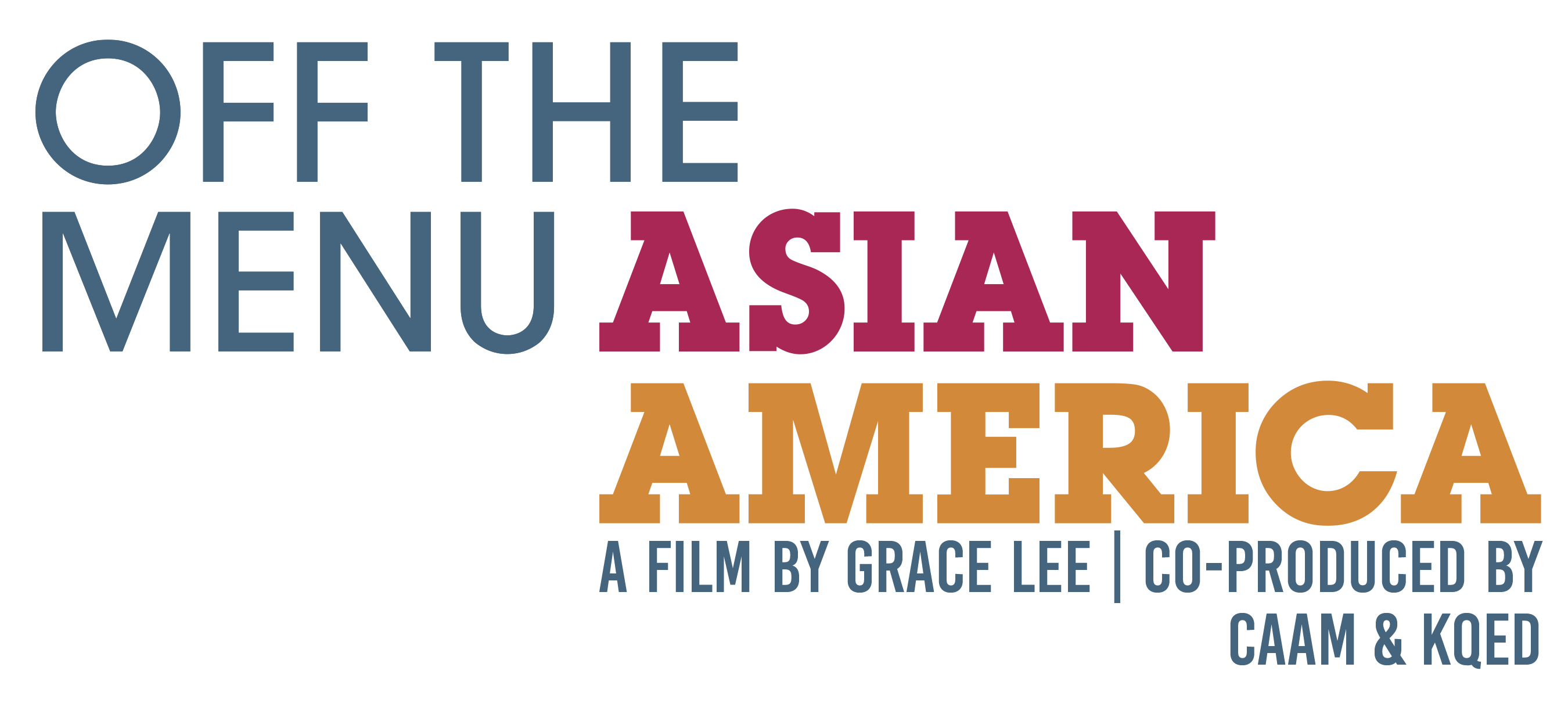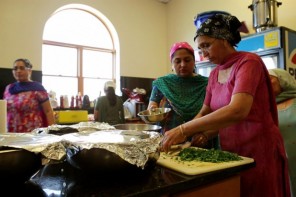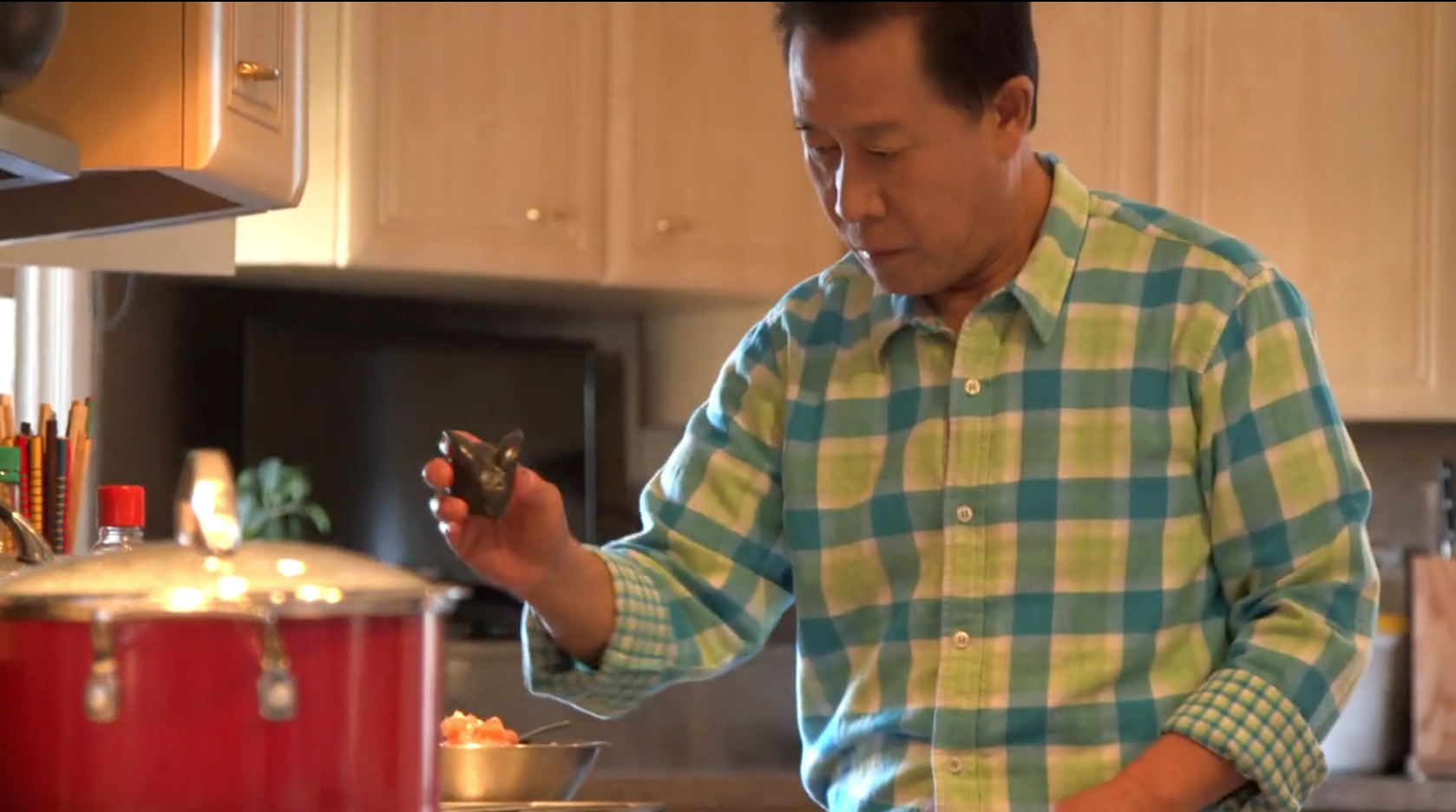There’s a big blank in my childhood memories where the Saturday mornings I might very well have spent watching cartoons ought to be. What I remember and deeply treasure, though, are the long hours I spent watching weekend cooking shows on TV. Even as a kid, it was always TV worth watching. I knew the public television and Food Network roster intimately, and still call my favorites by their first names. Jacques, Julia, Ina, Lidia, Jamie, Martha.
Each imparted kitchen wisdom to me: Julia Child, the immense pleasure of adding another knob of butter to a dish, especially if it’s behind your co-chef’s back; Jacques Pepin, that it’s in the peels, not the meat, where citrus fruit holds its fragrant essential oils; Martha Stewart, the occasional importance of fastidiousness.
But there’s one TV chef who taught me more than the rest. Martin Yan, the host of the classic series “Yan Can Cook” and at least a half dozen other cooking and food programs on public television, is a TV chef all-star who I consider one of my dearest cooking instructors. A Hong Kong native who eventually made his way to the U.S. via Canada, Yan didn’t teach his audience how to make soufflés or pot roasts. He taught Chinese dishes that reminded me of food I grew up eating as a kid, with methods that resembled the way my mom and aunts cooked. Black bean spareribs, tomato curry tripe, pork wonton, these are the flavors of home for me. Yan, like my mom, left the heads on his fish. He always used a gigantic Chinese cleaver. Yan thickened his stirfry sauces with pastes of corn starch and water. He loved giving a dish a good dousing of oyster sauce. Growing up I never felt Chinese ‘enough,’ but I drew comfort from watching Yan, who was way more Chinese than my fifth-generation family and yet who was clearly working with the same Cantonese kitchen fundamentals.
And he did it all with corny puns and a sense of humor bordering on the silly. Yan is as much a comedian as a cooking showman—the Victor Borge of Chinese cooking. To this day, I marvel at Yan’s ability to be his own courtside commentator and provide a constant stream of narration and wisecracks to follow his every cooking move. In one of his most famous kitchen tricks, Yan debones a chicken in 18 seconds flat. And he talks the whole way through it, explaining every slice with similar rapid-fire speed. There are probably more practical ways to learn how to debone a chicken, but none that are as entertaining to watch.
Here now are six essential kitchen lessons I learned from Martin Yan, the man who ended every show reminding his audience that if he could cook, so could you.
1) Knife skills are everything. In this short clip it’s not clear whether Yan is doing anything more than showing off his impressive knife skills. But he makes a strong case for why a good, sharp Chinese cleaver is your best friend in the kitchen.
2) Minced garlic and ginger is only ever one cleaver smash away. Again with the cleaver. A warning: be prepared for some flying garlic cloves (and a sore wrist) the first time you try this at home.
3) Whether it’s dumplings, julienned squid, or prawns, you know your oil is hot enough for deep-frying by using the “Chinese thermometer.” Stick a bamboo chopstick into the base of your pan and if the chopstick bubbles in the oil, you’re ready to fry.
4) Cut your meat across the grain, and you’ll get a more tender bite after it’s cooked. It takes Yan over a minute to make this point because he’s cracking jokes the whole time, but he does explain what happens when you mistakenly cut your meat along the grain: “You chew your jaws off.”
5) Stir-fry basics. How do you know what order to place your ingredients into a hot pan? Ingredients that take the longest to cook should go in first, and then incorporate ingredients from longest to shortest cooking time so everything’s done at the same time. Don’t forget the chili paste. Five spoonfuls and it’ll be so spicy “you’ll give yourself a perm.”
6) No really, find a good sharp Chinese cleaver. You can throw your mandolin and food processor away. With a Chinese cleaver, and presumably thousands of hours of practice, you too can slice a four-inch piece of cucumber into 50 paper-thin slices.
More
Off the Menu exclusive video of Martin Yan, “A Simple Life: Martin Yan.”
Julianne Hing is a reporter based in New York. She blogs at snackhouseblog.com
This post is a part of Off the Menu: Asian America, a multimedia project between the Center for Asian American Media and KQED, featuring a one-hour PBS primetime special by filmmaker Grace Lee (The Grace Lee Project, American Revolutionary), original stories and web content.



